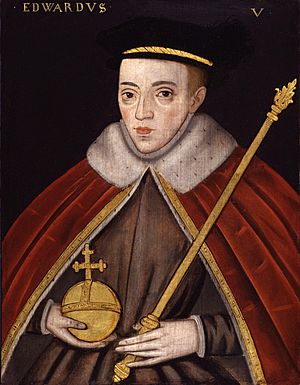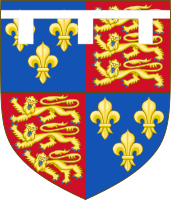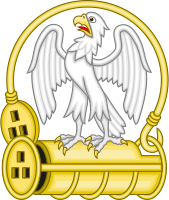Edward V of England facts for kids
Quick facts for kids Edward V |
|
|---|---|
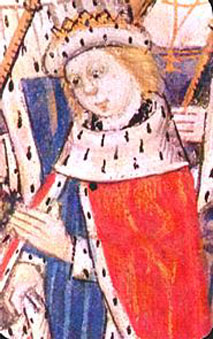
Depiction of Edward as Prince of Wales in the Dictes and Sayings of the Philosophers, 1477
|
|
| King of England (more...) | |
| Reign | 9 April 1483 – 25 June 1483 |
| Predecessor | Edward IV |
| Successor | Richard III |
| Lord Protector | Richard, Duke of Gloucester |
| Born | 2 November 1470 Westminster, England |
| Died | c. mid-1483 (aged 12) |
| House | York (Plantagenet) |
| Father | Edward IV of England |
| Mother | Elizabeth Woodville |
| Signature |  |
Edward V (born 2 November 1470 – died around mid-1483) was the de jure (meaning "by right") King of England for a very short time, from April 9 to June 25, 1483. He became king after his father, King Edward IV, passed away.
Edward V was never officially crowned. His brief time as king was mostly controlled by his uncle, the Duke of Gloucester. This uncle later took the throne himself, becoming King Richard III. Edward V and his younger brother, Richard of Shrewsbury, Duke of York, are known as the Princes in the Tower. They disappeared after being sent to the heavily guarded Tower of London. Many people believe Richard III was responsible for their deaths, but no one knows for sure what happened to them.
Contents
Early Life of a Prince
Edward was born on November 2, 1470, in a house next to Westminster Abbey. At the time, his mother, Elizabeth Woodville, was seeking sanctuary there. This was a safe place where people could go to avoid being captured. She was hiding from supporters of the Lancaster family, who were fighting against Edward's father, King Edward IV, in the Wars of the Roses.
After his father got his throne back, Edward was made Prince of Wales in 1471. This title is usually given to the heir to the throne. In 1473, he moved to Ludlow Castle near Wales. Here, he was the head of a new group called the Council of Wales and the Marches. This council helped govern the area.
Prince Edward's Education
Prince Edward was looked after by his mother's brother, Anthony Woodville, 2nd Earl Rivers, who was a very smart person. King Edward IV wrote down strict rules for how his son should be raised.
- Edward was to wake up early every morning.
- His day started with prayers and Mass, which he had to attend without being interrupted.
- After breakfast, he would begin his "virtuous learning."
- Lunch was served at ten in the morning. During this time, he would listen to "noble stories" about bravery, honor, and wisdom. He was not allowed to hear anything that might lead him to bad behavior.
- In the afternoon, the prince would do sports suitable for a royal.
- After evening prayers, supper was served at four o'clock.
- His attendants were told to make him "merry and joyous" before he went to bed. They would then watch over him as he slept.
King Edward IV also planned an important marriage for his son. In 1480, Edward was promised to Anne of Brittany, a four-year-old princess from France. The plan was for them to marry when they were older. Their first son would inherit England, and their second son would inherit Brittany. However, Anne later married someone else.
Edward's Short Reign
Edward was only 12 years old when he heard the news at Ludlow that his father had suddenly died. This was on April 14, 1483. King Edward IV's will said that his trusted brother, Richard, Duke of Gloucester, should be in charge while young Edward was too young to rule. This role was called Lord Protector.
The new king left Ludlow on April 24. Richard left York a day earlier, planning to meet Edward and travel to London together. However, when Richard arrived at Northampton, Edward and his group had already gone ahead to Stony Stratford. Edward's uncle, Earl Rivers, went back to Northampton to meet Richard.
On the night of April 29, Richard had dinner with Earl Rivers and Edward's half-brother, Richard Grey. But the next morning, Rivers, Grey, and the king's chamberlain were arrested and sent north. Even though Richard promised they would be safe, all three were later executed. A visitor to England at the time, Dominic Mancini, wrote that Edward protested, but his other helpers were sent away. Richard then took Edward to London.
On May 19, 1483, the new king moved into the Tower of London. On June 16, his younger brother, Richard of Shrewsbury, Duke of York, joined him there.
The royal council had hoped for Edward to be crowned quickly. This would avoid the need for a protector (someone ruling for a young king). Other young kings, like Richard II and Henry VI, had been crowned at a young age. But Richard kept delaying Edward's coronation.
On June 22, a preacher named Ralph Shaa claimed that King Edward IV had already promised to marry another woman, Lady Eleanor Butler, before he married Elizabeth Woodville. This would mean that Edward IV's marriage to Elizabeth was not valid, and their children, including Edward V, were not legitimate. Since Richard's other brother's children were also not allowed to inherit the throne, an assembly of important people declared Richard to be the rightful king on June 25. This was later made official by a law called Titulus Regius. The next day, Richard became King Richard III.
The Princes Disappear
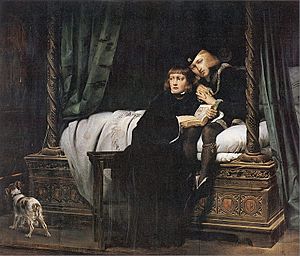
Dominic Mancini wrote that after Richard III became king, Edward and his brother Richard were moved to the "inner apartments of the Tower." People saw them less and less until the end of summer or autumn of 1483, when they completely disappeared from public view.
No one knows for sure what happened to the princes after they disappeared. The most common idea is that they were murdered on the orders of their uncle, King Richard. Before they disappeared, Edward was often visited by a doctor. Some historians think that people at the time might have believed Edward died from an illness.
In 1674, workers rebuilding a staircase in the Tower found bones belonging to two children. King Charles II ordered these bones to be placed in Westminster Abbey in a special container with the names of Edward and Richard on it. The bones were looked at again in 1933. It was found that the skeletons were not complete and had animal bones mixed in. It has never been proven that these bones belonged to the princes.
In 1789, workers repairing St George's Chapel, Windsor Castle, accidentally opened the tomb of Edward IV and Elizabeth Woodville. Next to it was another tomb with two children's coffins. This tomb was marked with the names of two of Edward IV's children who had died before him. However, the remains of those two children were later found somewhere else in the chapel. This means the children in the coffins within that tomb are still unknown.
In 1486, Edward IV's daughter, Elizabeth of York, who was Edward V's sister, married Henry VII. This marriage helped bring together the two warring families, the Houses of York and Lancaster.
Portrayals in Fiction
Edward V appears as a character in William Shakespeare's famous play, Richard III. In the play, Edward and his brother are shown as smart children who can see through their uncle's plans. Edward is especially portrayed as being wise for his age and ambitious about being king. The play describes their deaths, but it happens offstage. Their ghosts later appear to haunt their uncle's dreams.
Many actors have played Edward V in movies and TV shows based on Shakespeare's play:
- Paul Huson in the 1955 film version, with Laurence Olivier as Richard.
- Hugh Janes in the 1960 BBC series An Age of Kings.
- Dorian Ford in the 1983 BBC Shakespeare version.
- Marco Williamson in the 1995 film version, with Ian McKellen as Richard.
- Caspar Morley in the BBC's 2016 adaptation, The Hollow Crown, alongside Benedict Cumberbatch as Richard.
Edward V also appears as a baby in another Shakespeare play, Henry VI, Part 3. His father, Edward IV, tells his brothers to "kiss your princely nephew." However, his uncle, the future Richard III, secretly plans his nephew's downfall.
Edward also appears in the historical novel The White Queen by Philippa Gregory and the TV series based on it. In the TV series, he is played by Sonny Ashbourne Serkis.
Heraldry
As the heir apparent (the person next in line for the throne), Edward used the royal arms (a shield with symbols of France and England). During his short time as king, he used the full royal arms. His special symbols were the fetterlocked falcon and the white rose of York, which were common symbols for the York family.
-
Falcon and fetterlock
See also
 In Spanish: Eduardo V de Inglaterra para niños
In Spanish: Eduardo V de Inglaterra para niños


